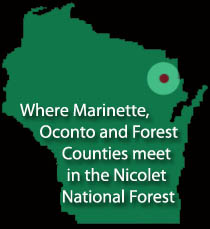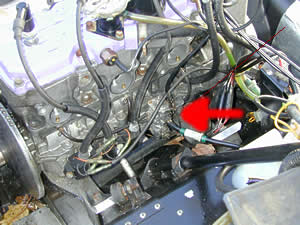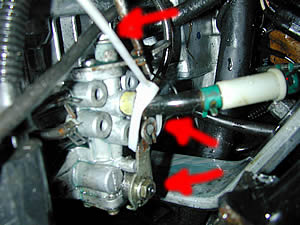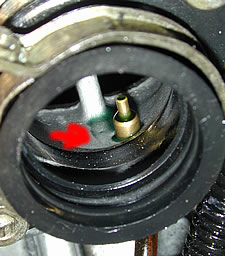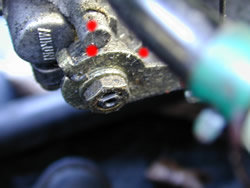|
|||||||||||||||||||||||||
|
When I went to Polaris Master Tech school about 8 years ago, they spent a lot of time drilling into our heads how important it is to bleed your oiler any time you run the oil tank low or open the system. Sometimes an oiler will digest an air bubble, more likely, it will cavitate and stop pumping oil for a while. Even if it does pass a bubble, it still leaves your engine without lubrication for pretty long. I personally will not bet a $1,500 - $4,000(+) motor on it, especially when the procedure takes less than 10 minutes while servicing the carbs, as you should every fall. When I started snowmobiling, we had mixed gas. We ran a 16:1 ratio, and fouled a lot of plugs. A few years later, the sled makers said 32:1 was ok, and everyone thought they were nuts. Then came 40:1 oil, and Yamahas had the first snowmobile oil injection systems. Now many 2 strokes run 50:1 or leaner mixes. With the possible exception of the Mighty 120/Kitty Cat class and the new 4 strokes, all sleds have automatic oil injection systems. These prevent mixing mishaps and are generally pretty trouble free. The are not that forgiving though, sometimes they run leaner than a 100:1 oil ratio, and when they fail, so does your engine. There are three primary failures to these pumps. The most common is where someone runs the oil reservoir too low and gets a bubble. The same thing can happen with water when the unfortunate rider may dip the sled in the lake, but it is a water bubble, not an air bubble. The result will be the same, a smoked motor. Another common failure of these comes when you don't keep the cable that runs the oiler in adjustment. As the cable gets slack, the oiler gets the motor less oil, and at an idle, can almost stop the oil flow. The end result is a motor that starves for oil. The third failure comes with the various hoses that attach to the oiler. The oiler itself runs on crankcase vacuum, and some sleds have a short run of line to the case. If that line leaks, your oiler will not be doing the job. In my case, the oil reservoir line had cracked, and could easily break, dumping the reservoir of oil out into the belly pan, stranding me in the middle of nowhere. That will end a ride, or a season, in a hurry.
Early December 2002 It was mostly little stuff that needed to be done. I went through the carbs and cleaned them out. I lubed the choke and throttle cables, replaced gas and oil lines that were checked up or in danger of cracking open, and a few other things in the carb area. In total, I found 3 or 4 items that would have caused a major engine failure, so it was time well spent. The top one was the cracked oil line running from the oil reservoir to the oil pump. Replacing this line meant an air bubble in the oiler system, a sure fire way to smoke a motor. The bleeding procedure for this is easy, and there just isn't any excuse for not doing it right. Last year a question came up about bleeding the oiler, and I looked on the internet to see what was out there. It wasn't much, so I will be doing a tech report on the procedure today.
In my case, I needed to replace the oil line coming from the reservoir, located just below the red arrow. Once I had replaced the line, I opened the screw on the top of the oiler and bled the oil down into the pump body. In the picture below, it is somewhat obscured by the tywrap, but the top arrow points to it. On some oilers, this screw is on the front, but it works the same.. Loosen the screw, the oil purges the air from the oiler body, tighten the screw firmly.
If you removed the carbs to check the ports, but them back on, and you are going to synchronize them, do so before doing any oiler cable adjustment. Procedures vary for adjusting oiler cables, but the idea is pretty much the same.
At any rate, on my oiler, if I remember rightly, you are to hold the throttle wide open and adjust the cable so that the two marks line up. (The picture shows it at an idle, at wide open, the mark on the casting and the mark on the right would line up. It also shows that at idle position, it is past the first mark) Some calibrate it at idle, some at WOT (Wide Open Throttle). Personally, I am running oversized carbs so I like a little extra oil to make up for the extra fuel mix going into the engine. I was running at 102 cfm through the stock carbs, with the oversized flat slides that I put on, it is about 120 cfm, almost 20% more gas. At that point, I need a little more oil than it was originally calibrated for. I make sure that the cable is just pulling the oiler arm at an idle and at least hits the wide open throttle mark. Adjusted as shown, the engine would get plenty of oil and run in a safe range. It is within the range of the marks at idle and at wide open throttle. Once it is back together enough to run, I will again hold this arm open while the motor runs to pump oil up into the ports and be absolutely positive that there is a solid flow free of bubbles. The extra oil won't hurt anything beyond a set of plugs, and it will make sure it is done right. This all may sound fussy, but snowmobile engines are expensive. The mono block cylinder on my sled is $800. I would much rather be safe that be investing $1,500 in a rebuild because I skipped a 10 minute procedure. You need to bleed your oiler anytime you run the reservoir out of oil, or if you open the system to pull the motor or to replace the line or filter. If you leave the bubble in the line, you will get about a mile before your motor becomes a one piece unit, locked tight. I have been with people when they did it, I have seen it first hand. , this is a good procedure to know if you run the reservoir low on oil out on the trail, make it to the gas station, add oil and get a bubble. If you can wrestle the air box off, you should be able to bleed it in about 5 minutes. In absence of being able to pull the air box, you can at least hold the throttle wide open(thus holding open the oiler arm)and pull the engine over with no plugs in it to get the bubble out and get oil up to the ports. Just keep pulling and holding the throttle open until the bubble passes at all 3 ports. Figure 50-100 pulls, but that is a guess. You have to watch the bubbles. The oiler cable adjustment and oil pump system bleeding procedure is something to take very seriously. A lot of people, and shops, just have no idea how important it is. Like I said above, my motor would be about $1,500 to rebuild, but the sled is 8 years old. I looked up the price of a 2003 sled engine, and it was $3,600. That makes it important. Losing trail time and towing a sled 100 miles home because you didn't take the bubble seriously makes it pretty important too. You should check your oiler cable adjustment each fall, and you should bleed the oil system any time you run the oil tank too low and get a bubble, or anytime you open the system. Now that you know how, it is pretty easy, and just should be done.
|
|
|
